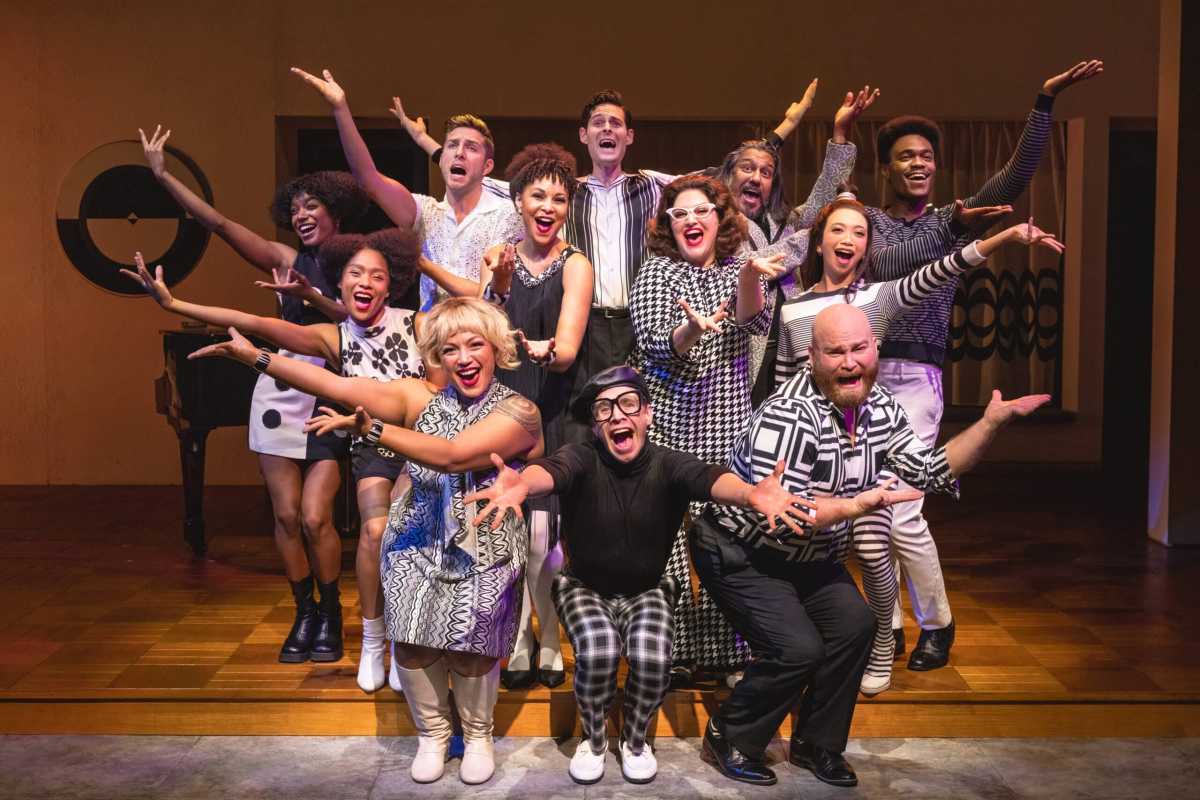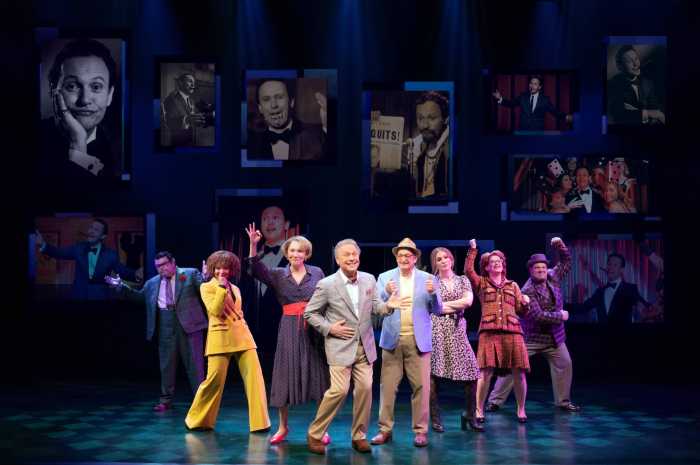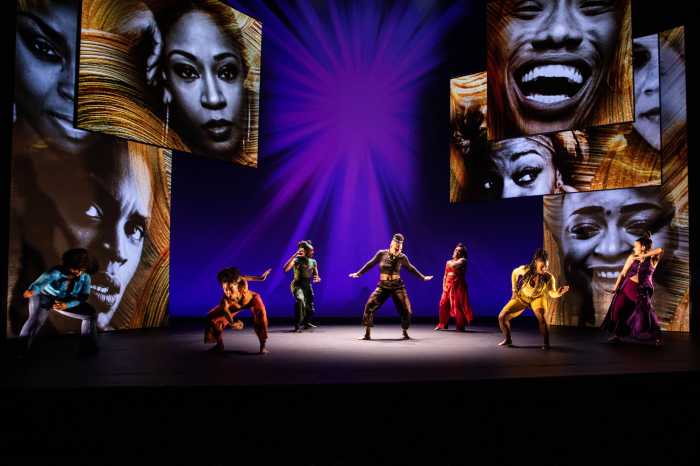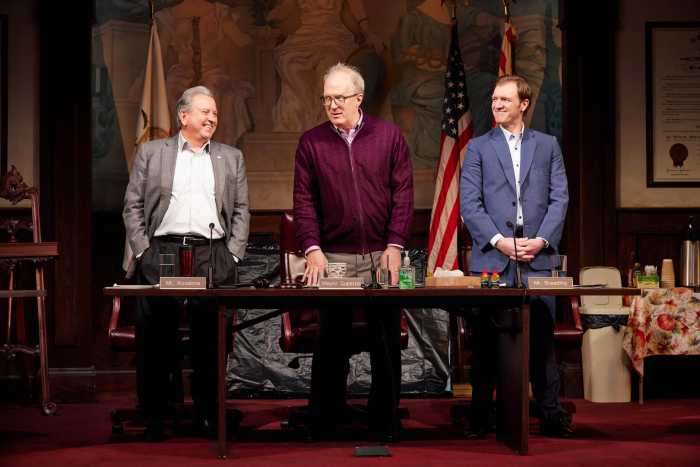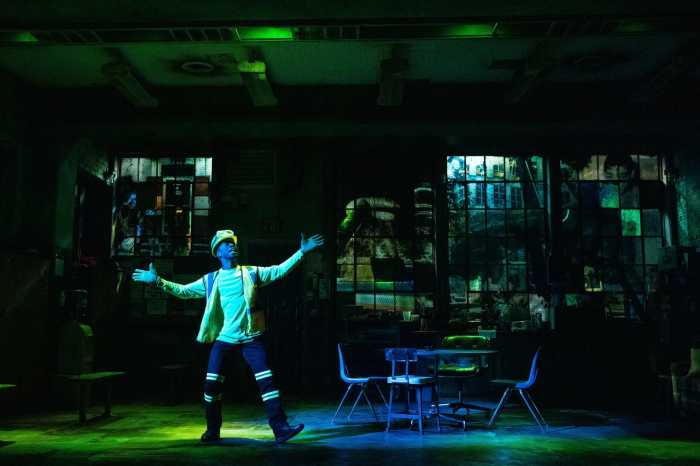At long last, to quote the author: “It’s a hit! It’s a hit! It’s a palpable hit!”
The eagerly-awaited, first-ever Broadway revival of Stephen Sondheim and George Furth’s bittersweet, uniquely-structured musical “Merrily We Roll Along” comes 42 years after the (intriguing but seriously misconceived) original Broadway production opened and closed after just 16 performances, and follows countless other professional productions and major rewrites while Sondheim and Furth were still alive.
Maria Friedman’s production was first seen in London a decade ago, where it received a film recording that was screened in movie theaters. It finally arrived in New York last year, playing New York Theatre Workshop in the East Village, with a knockout cast led by Jonathan Groff, Daniel Radcliffe, and Lindsay Mendez.
The production, which has received a few significant visual and musical upgrades since its Off-Broadway debut, is probably the most convincing, coherent, and compelling rendition of “Merrily” to date, making it the best candidate for its Broadway return. For the show’s many devoted fans (of which I am certainly one), this production is not just a triumph but a homecoming and a vindication.
“Merrily,” which contains some of Sondheim’s greatest and most touching songs, notoriously moves backwards in time in order to demonstrate how the three-way friendship of Frank (Groff), Charley (Radcliffe), and Mary (Mendez) disintegrates as Frank, a talented composer, loses sight of his dreams in pursuit of material success.
The most important change to “Merrily” over the years has been to make Frank more sympathetic and less of a jerk. Groff, who combines the looks and charisma of a young matinee idol with tender sensitivity, is the ideal Frank–someone who everyone else can’t help but fall in love with, which is why his pals self-destruct when Frank loses his way.
Radcliffe and Mendez give outstanding performances that are emotional but not overwrought, funny but not hammy, sharp but not chilly. The three other lead performers (Krystal Joy Brown, Katie Rose Clarke, Reg Rogers) are fine as the other three principal characters, who have some fine moments but are decidedly secondary in the plotting.
Friedman emphasizes that “Merrily” should be viewed as a kind of flashback for the older Frank, with Frank’s posh Los Angeles house serving as a frame for subsequent (well, technically preceding) scenes. The production ends with a visual that is simple, stunning, and extremely hopeful, making one believe that maybe Frank really can turn his life around and reunite with Charley and Mary.
While it would have been nice to have a full-size orchestra playing the complete original orchestrations (as is the case with the current Broadway revival of “Sweeney Todd”), the sound quality is still robust, and the show’s brassy overture sounds terrific.
I am not saying that “Merrily” is faultless. The songs written after the Broadway premiere lack the vitality of the rest of the score, and much of the dialogue is awkward and heavy-handed. Notwithstanding, “Merrily” attracts musical theater fans in the same way that the title character mesmerizes his pals.
On a personal note, I first saw “Merrily” when I was even younger than Frank in the first (or rather last) scene, and am now around the same age as the older Frank. While I don’t necessarily know if the plot structure and character consequences of “Merrily” have helped me make better decisions and life choices, being able to listen to the original Broadway cast album (one of the greatest ever recorded) and attend new productions of the show has certainly enriched my life.
Hudson Theatre, 141 W. 44th St., merrilyonbroadway.com.



